Payout User Guide
Payouts are individual deposits, oftentimes from a payment processor, that are an aggregate of client payments, merchant fees, and other transactions.
A common example of a payout occurs when a business owner sends invoices and collects invoice payments via Stripe. Throughout the week, the business owner receives several invoice payments and incurs Stripe fees on each payment. At the end of the week, all of those transactions are combined into a single payout from Stripe to the business owner's bank account.
Getting started with Payouts
The Hurdlr API ingests and automatically reconciles payout deposits and their itemized transactions, while Hurdlr's Embedded UI illustrates this connection.
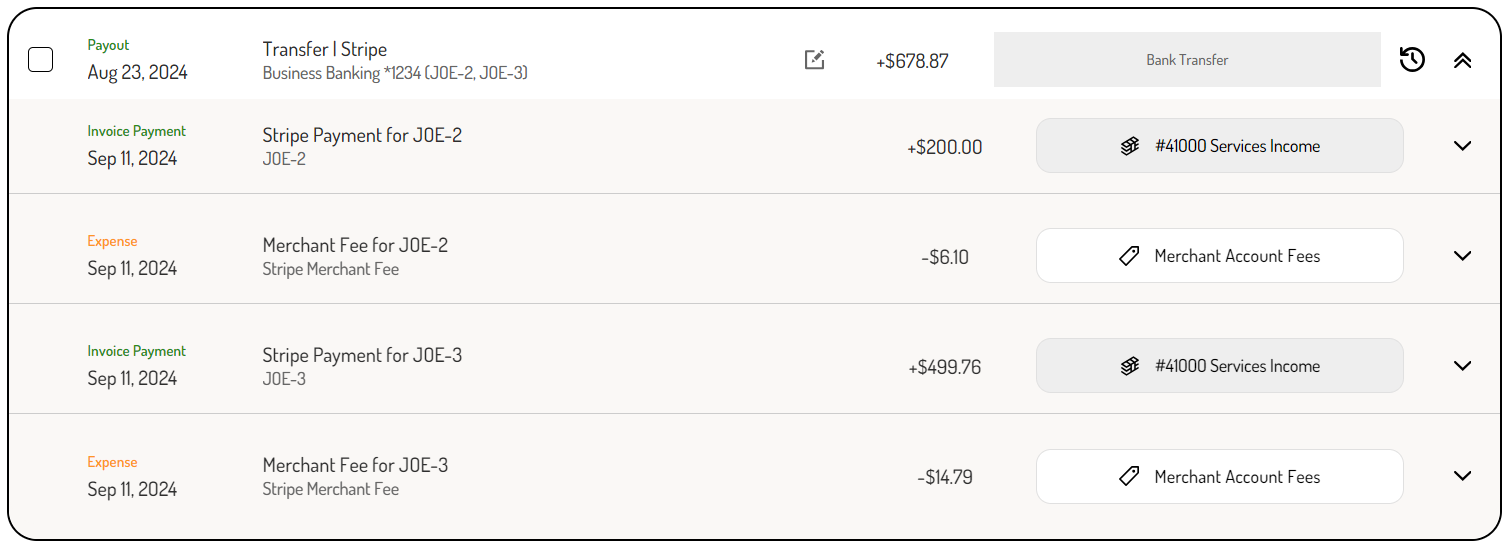
When Hurdlr's invoicing feature is used with a linked payment processor, payout matching happens automatically, typically requiring no action from the bookkeeper or business owner to categorize payouts. However, for direct invoice payments or when Partners use their own invoicing systems, the API cannot always match Payouts. In such cases, Hurdlr provides the necessary APIs as well as a user-friendly interface for users and bookkeepers to manually match payouts with their itemized transactions.
Viewing and expanding Payout rows
Once a deposit is linked to its corresponding invoice(s) or transactions, it will be labeled as a ‘Payout’ in the Income Dashboard and Transaction Dashboard. These Bank Transfer transactions will feature a double chevron icon, indicating they can be expanded to view additional details.

When expanded, the Payout will display the associated transactions, invoice payments, and merchant fees.

Clicking on an invoice payment or expense will redirect to the relevant invoice and display the 'Matched Payouts'.

Tracking Payouts when using Hurdlr's Invoicing
Once a user's client pays an invoice through a linked payment processor (e.g., Stripe, Maast, or Moov), Hurdlr automatically marks the relevant invoice as ‘Paid.’ When the corresponding deposit from the payment processor is received into the business owner's bank account (e.g. via the Plaid integration), it will be automatically matched to the relevant invoice(s) and accounted for such that income is not double-counted. Typically, Hurdlr will handle this matching automatically. However, in some edge cases where the match isn't detected, or for direct/cash/check payments, the matching can be performed manually via the Invoice Dashboard.
Matching payment processor payouts to invoices
In rare cases where a bank deposit isn’t automatically matched to the corresponding payout from the payment processor, users can manually match a payout to an invoice.
To match a payout with an invoice
-
Navigate to the Invoice Dashboard, and click on the paid invoice.
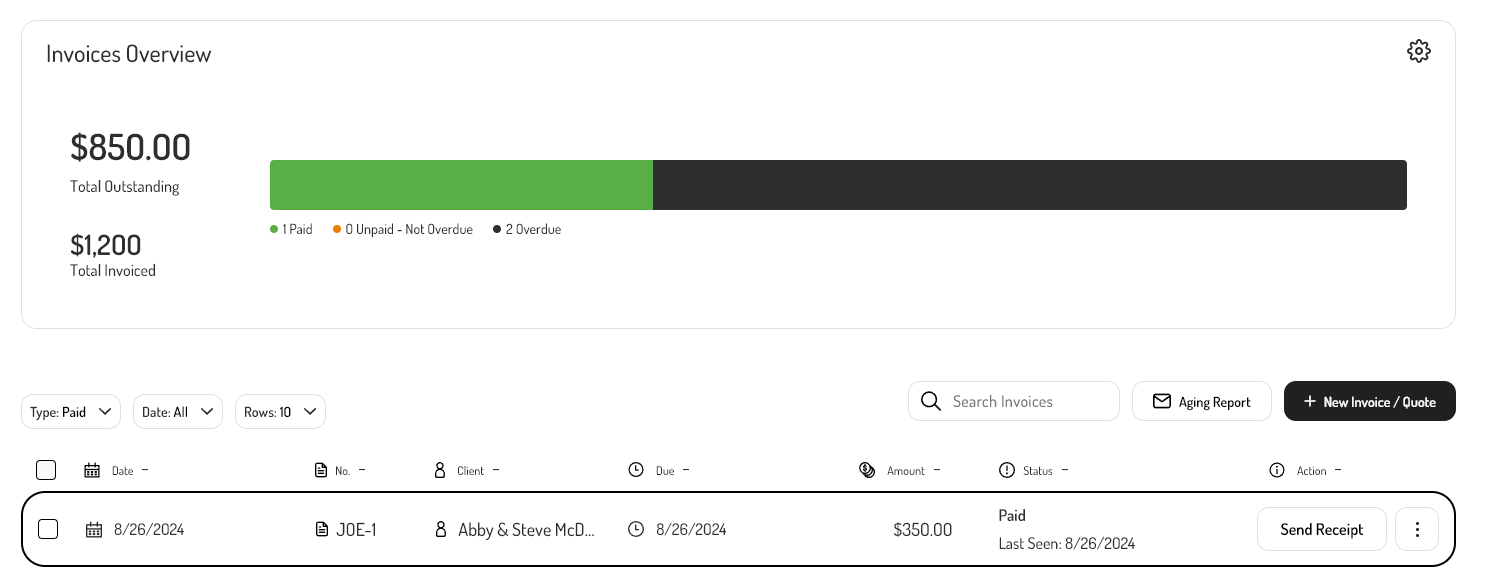
-
The payment from the payment processor will appear at the top, click ‘Match a Payout’.
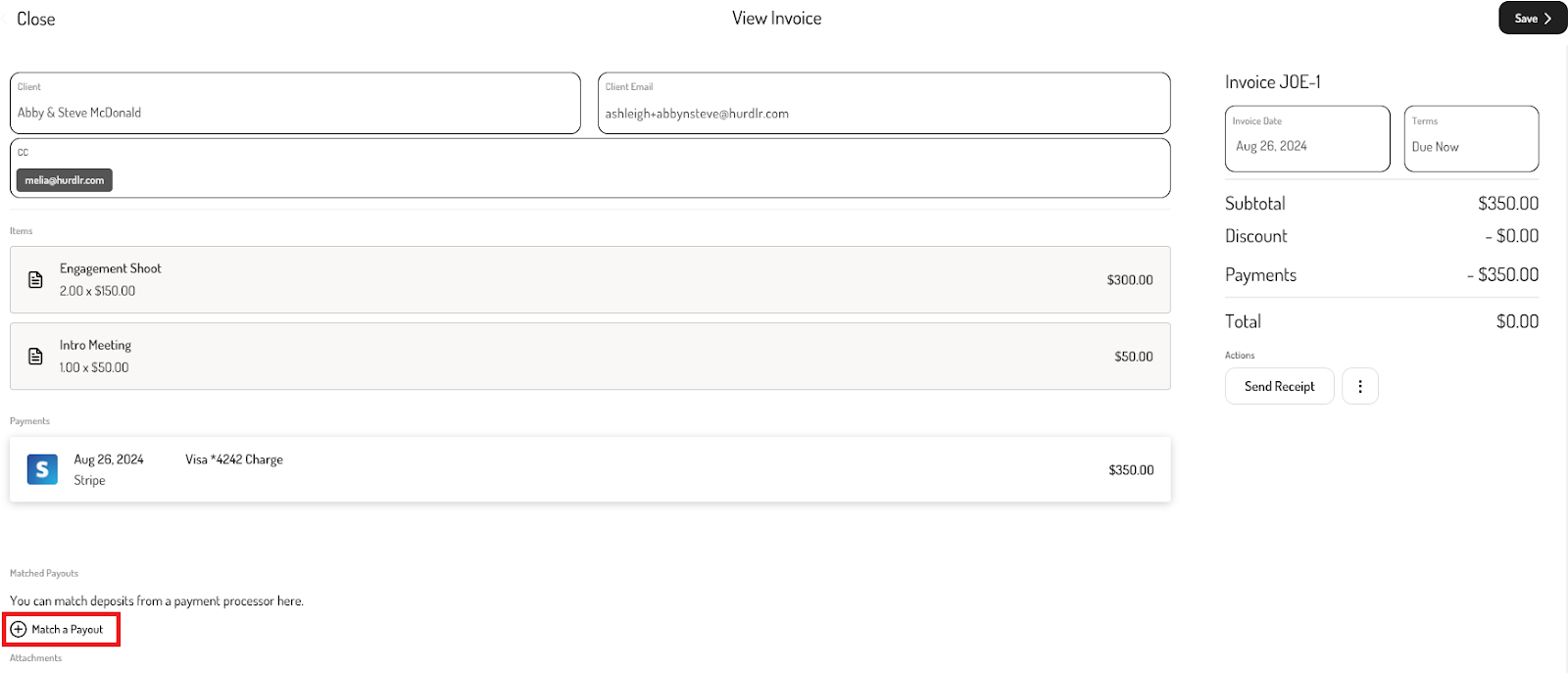
-
A sidebar will display deposits that most likely correspond to the invoice, based on factors like amount, date, client, and description. If the suggested matches don’t include the correct deposit, use the search bar to find it by amount or name.
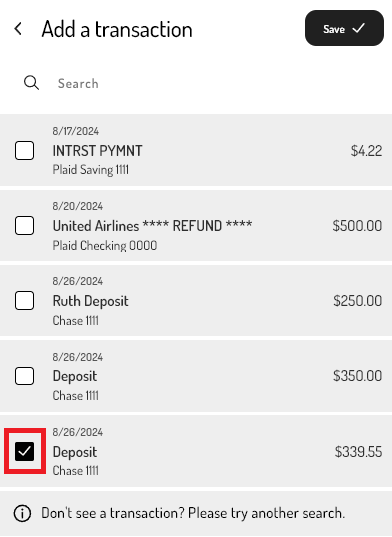
-
Select the deposit that corresponds to the invoice. If the deposit amount exceeds the invoice, a drop-down will allow selection of other invoices associated with the deposit.

-
Save the invoice.
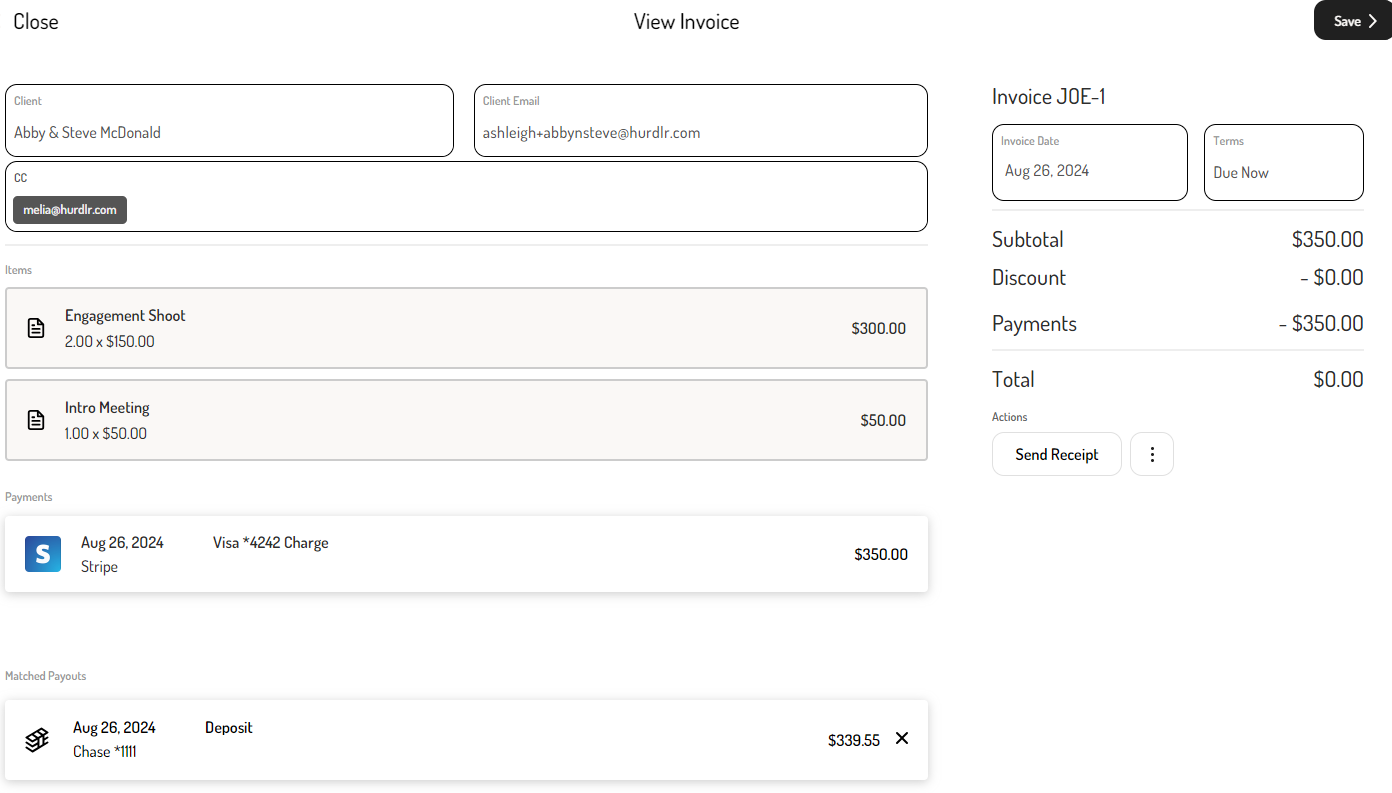
The deposit must match the total of the invoice(s), minus the payment processor fees. If the deposit amount is less or more than the invoice(s), the Payout cannot be saved.
To edit a Payout
To edit the Payout itself, click the edit icon on expanded Payout in the Transaction Dashboard.

To remove a Payout from an invoice
- Navigate to the Invoice Dashboard and select the specific invoice.
- Click the ‘X’ to remove the transaction from the invoice.
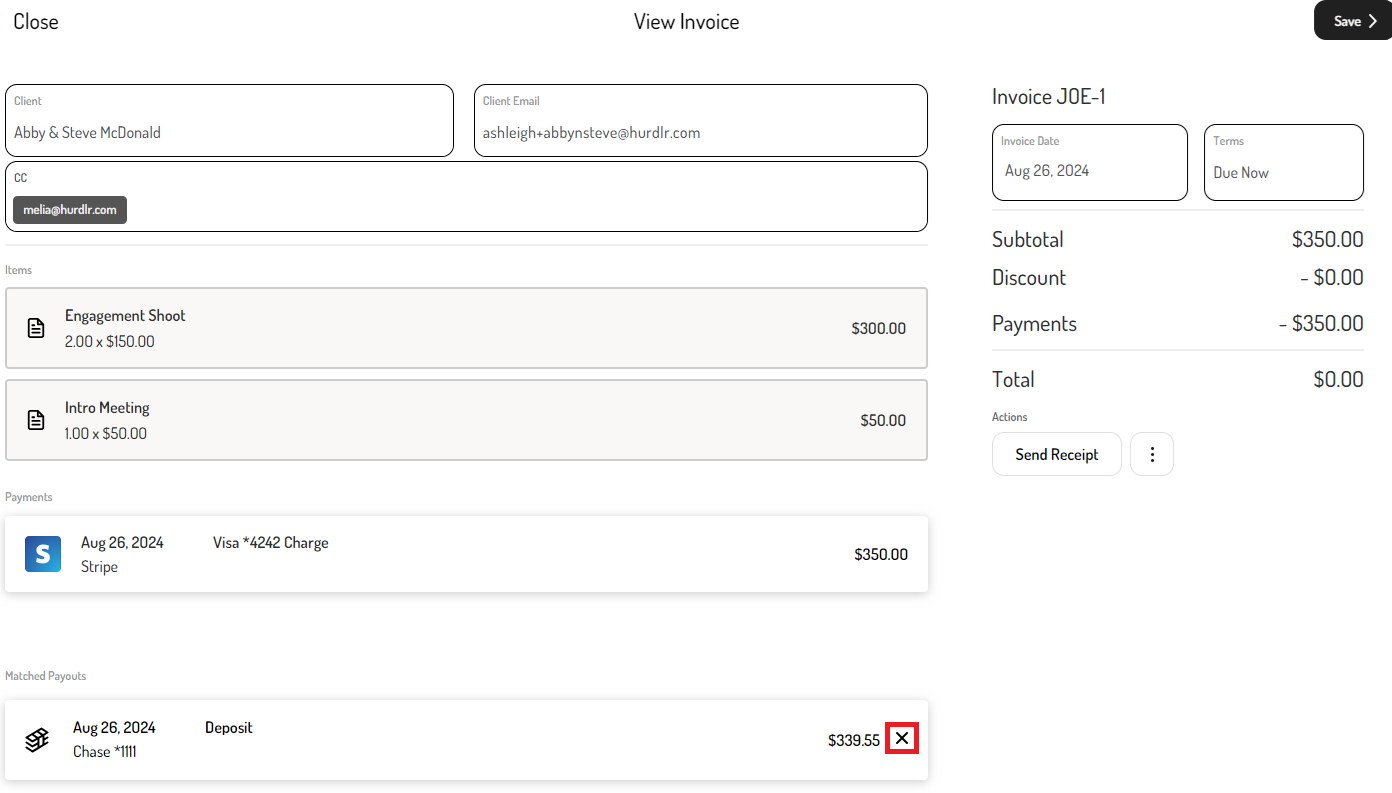
- Click ‘Save’.
- The previous Payout will still appear as a Bank Transfer in the Transaction Dashboard but will no longer be linked to the invoice or labeled as a 'Payout'.

Matching direct (cash/check) payments to invoices
For invoices paid via direct methods (e.g., cash or check, not through a linked payment processor), the finalized invoice will display an option to attach a bank transaction or cash payment to mark the invoice as paid.
Once a transaction is matched to an invoice, Hurdlr converts the deposit into an invoice payment and categorizes it under the Services Income (or similar) GL account. If multiple deposits are associated with a single invoice, they will appear as separate invoice payments on the Income Dashboard or Transaction Dashboard. Conversely, if a single deposit covers multiple invoices, the payments will be bundled together as a Payout, as described earlier.
To attach a bank transaction to an invoice
-
Navigate to the Invoice Dashboard and select the specific invoice.
-
Click ‘Add Bank Transaction’.

-
A sidebar will display deposits that most likely correspond to the invoice, based on factors like amount, date, client, and description. If the suggested matches don’t include the correct deposit, you can use the search bar to find it by amount or name.
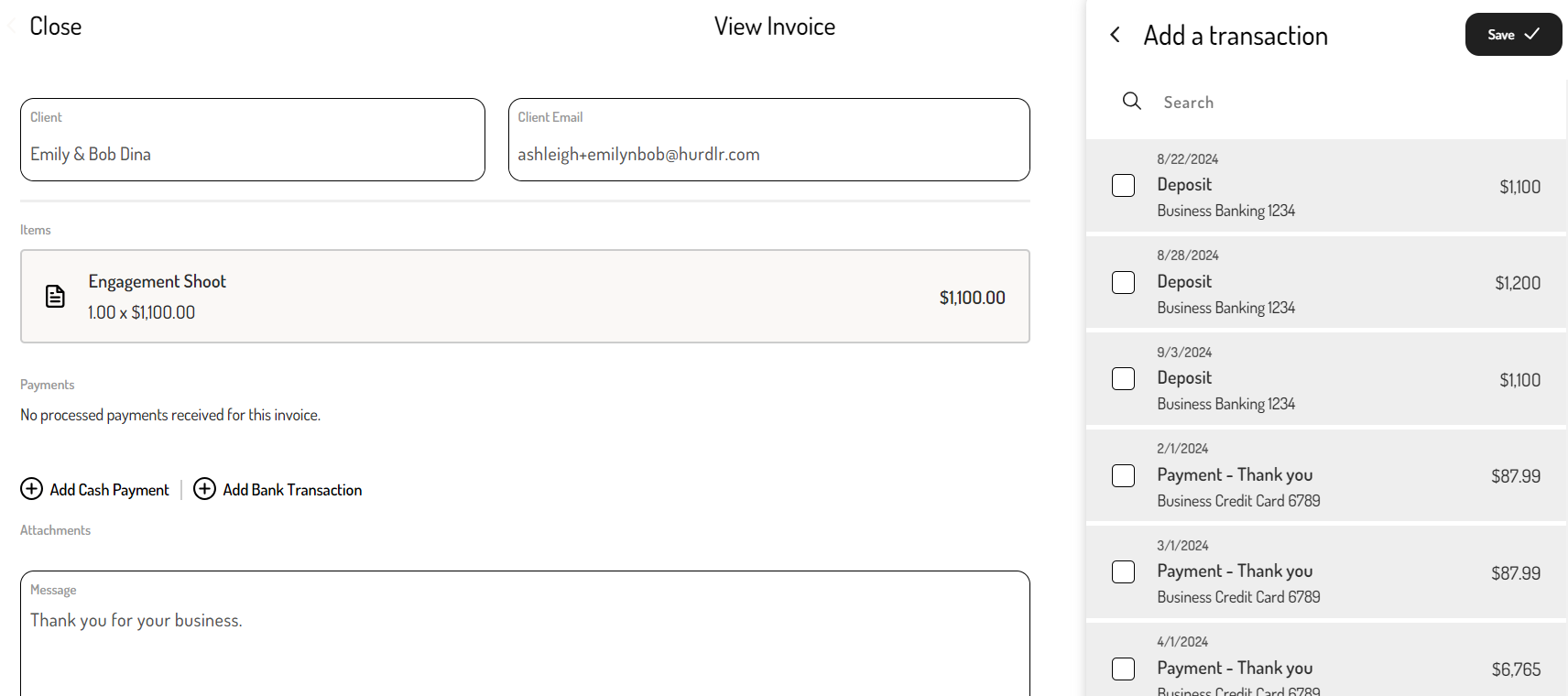
-
Select the deposit that corresponds to the invoice.
-
If the deposit amount is less than the invoice total, it can be saved as a partial payment.
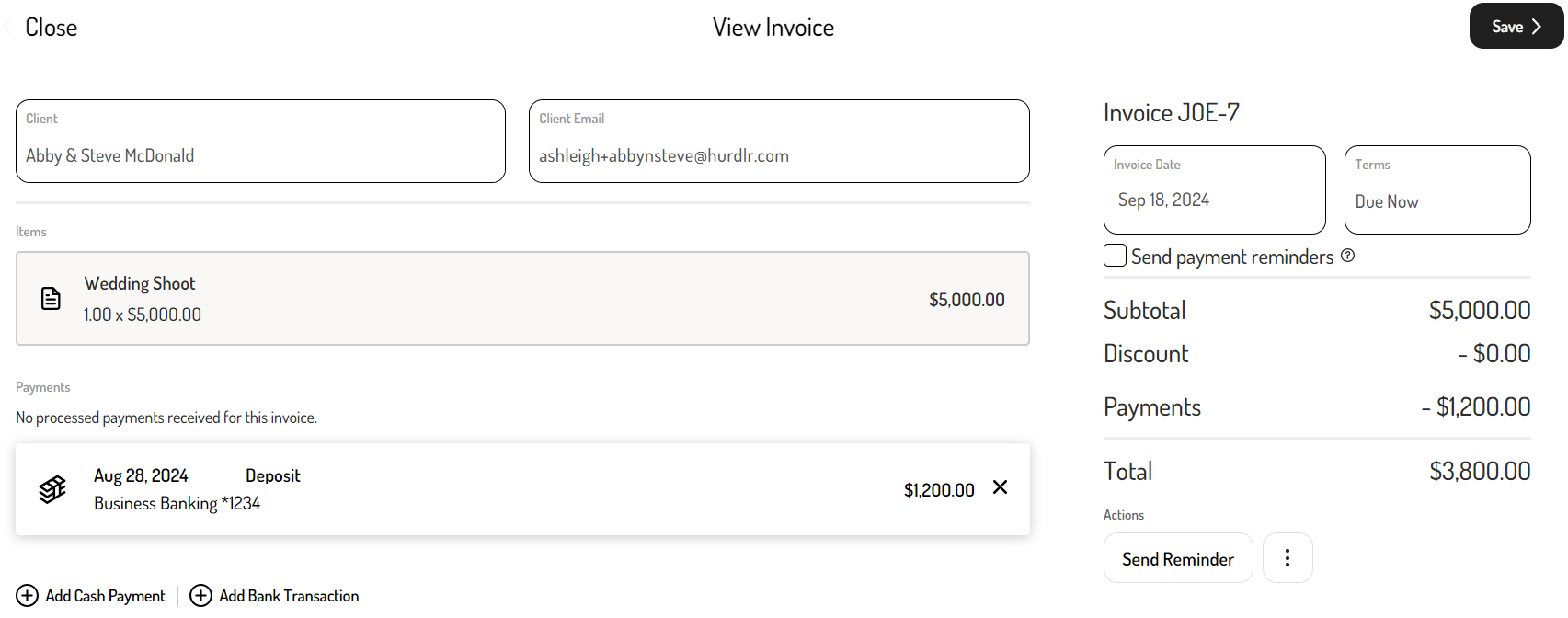
-
If the deposit amount exceeds the invoice total, a drop-down will appear to allow selection of other invoices associated with the deposit.
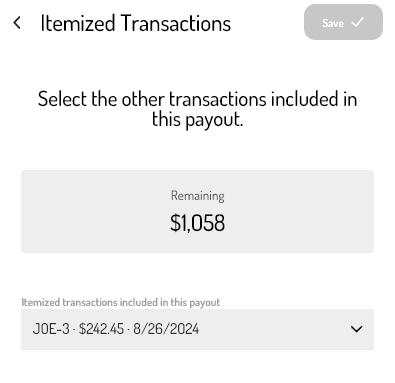
-
If multiple deposits are selected and exceed the invoice total, an error will indicate that only deposits less than or equal to the balance can be attached.

-
-
Click ‘Save’.
To add a cash payment to an invoice
- Navigate to the Invoice Dashboard and select the specific invoice.
- Click ‘Add Cash Payment’.
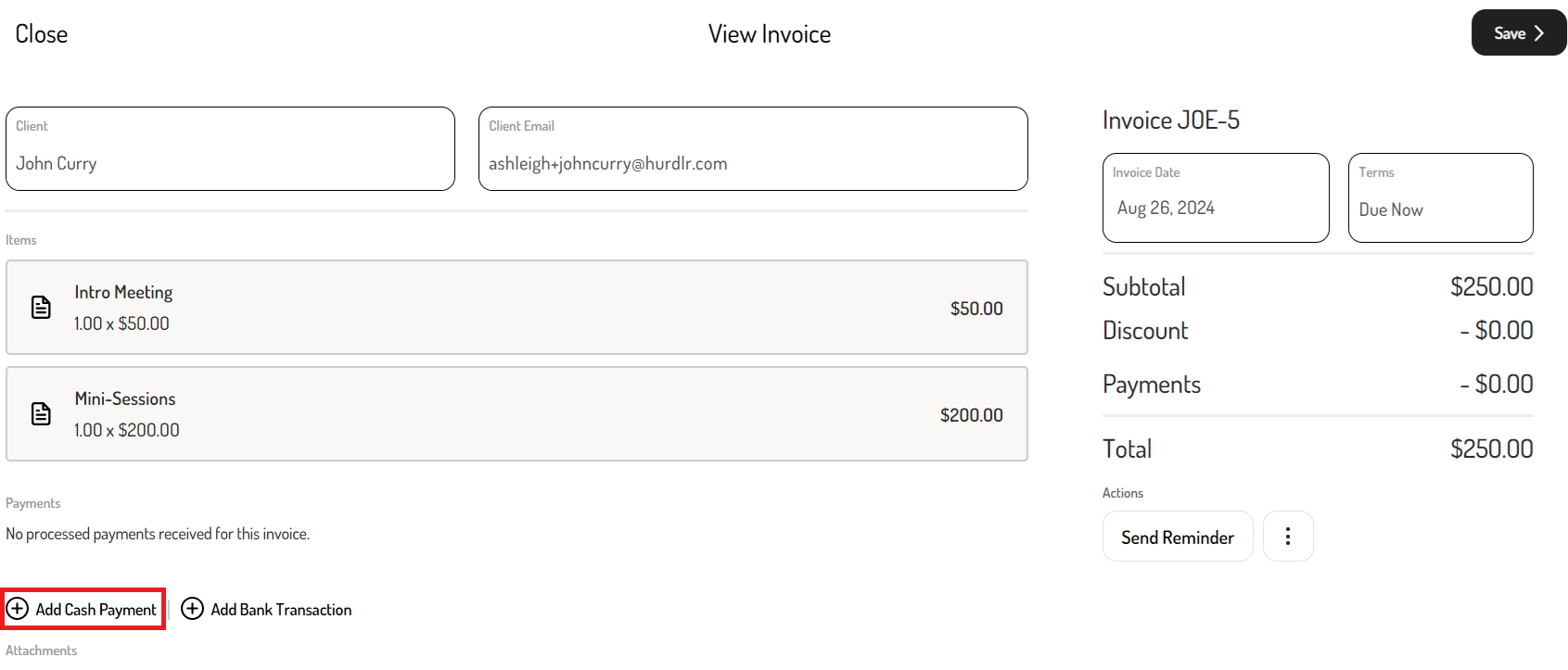
- Enter the necessary details, including the date, amount, and any notes. The content in the 'Notes' field will become the transaction title. If no notes are added, the title will default to 'Cash Payment'.

- Click ‘Save’.
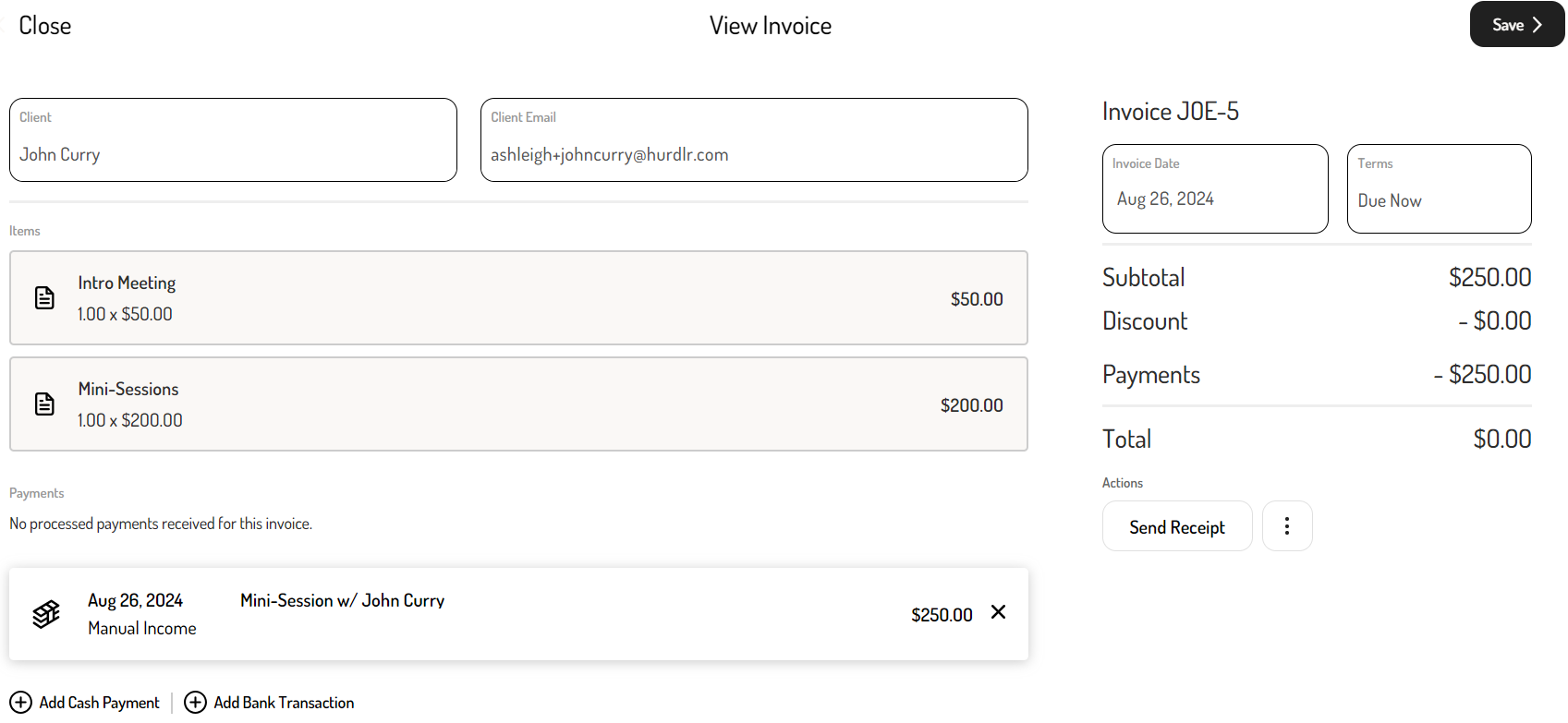
Direct payments with processing fees
If a business owner receives a direct payment via a third-party payment processing platform that is not linked with the Hurdlr API and carries an associated merchant fee, the Payout functionality can still be used to accurately track the income, merchant fee, and deposit.
To do this:
-
Create a Manually Tracked Account and name it to reflect the clearing account of the third-party processor (e.g., “Paypal”).

-
Manually enter an income transaction for the gross amount of the payment (before fees) and select the Manually Tracked Account as the bank account.
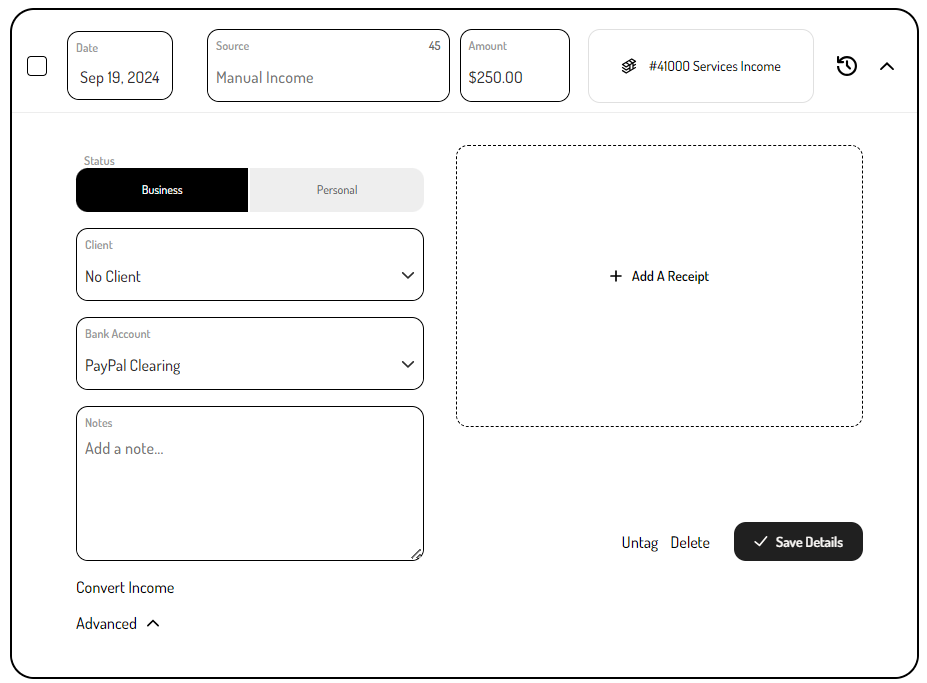
-
Manually enter an expense transaction for the processing fee and again select the Manually Tracked Account as the bank account.
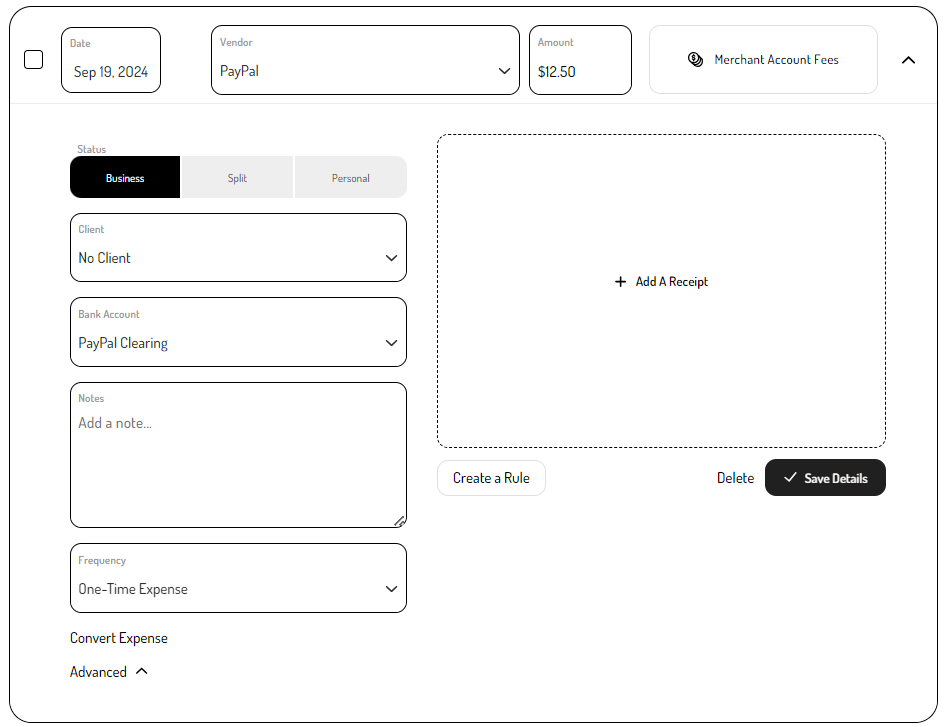
-
Navigate to the Invoice Dashboard, and open the invoice to be paid.
-
On the invoice form, select 'Add Bank Transaction', and choose the manually entered income transaction from the list.
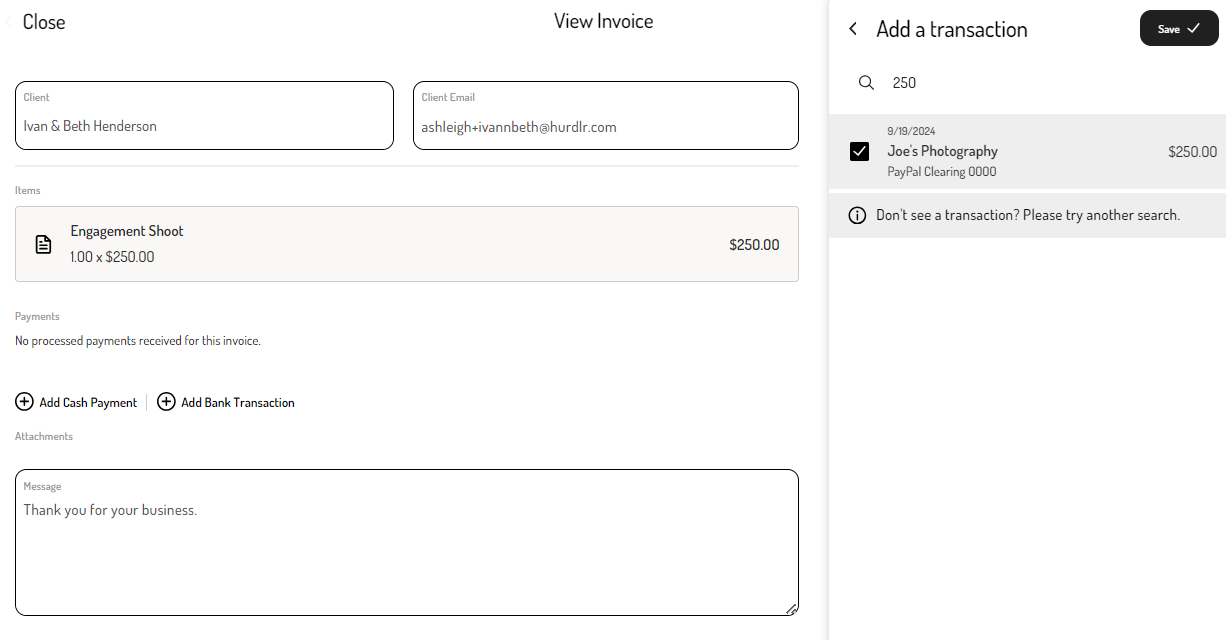
-
Navigate to the Transaction Dashboard, and click on the deposit from the payment processor that was deposited into the linked bank account.
-
If the deposit was processed as a revenue, convert it to a Bank Transfer, and set the ‘From’ account as the Manually Tracked Account.
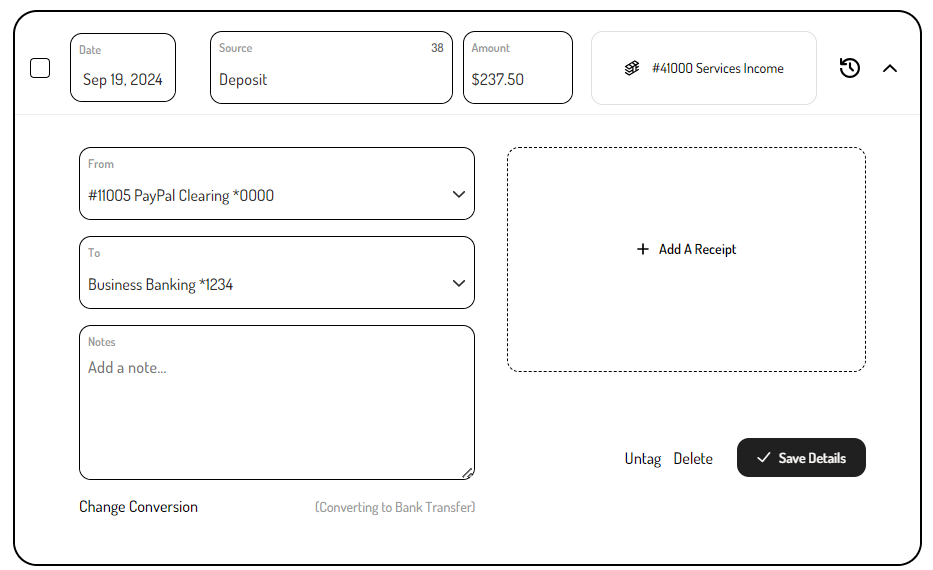
-
In the ‘Itemized transactions included in the Payout' field, select the manually entered income and expense transactions.
-
If this deposit was converted to a Bank Transfer in step 7, it must be saved and reopened before the option to select itemized transactions appears.
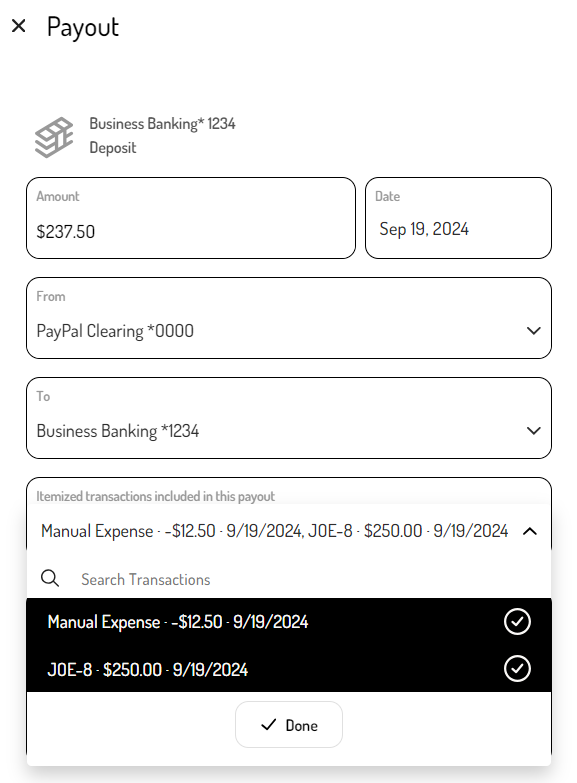
-
-
Click ‘Save’.
Updated 2 months ago
